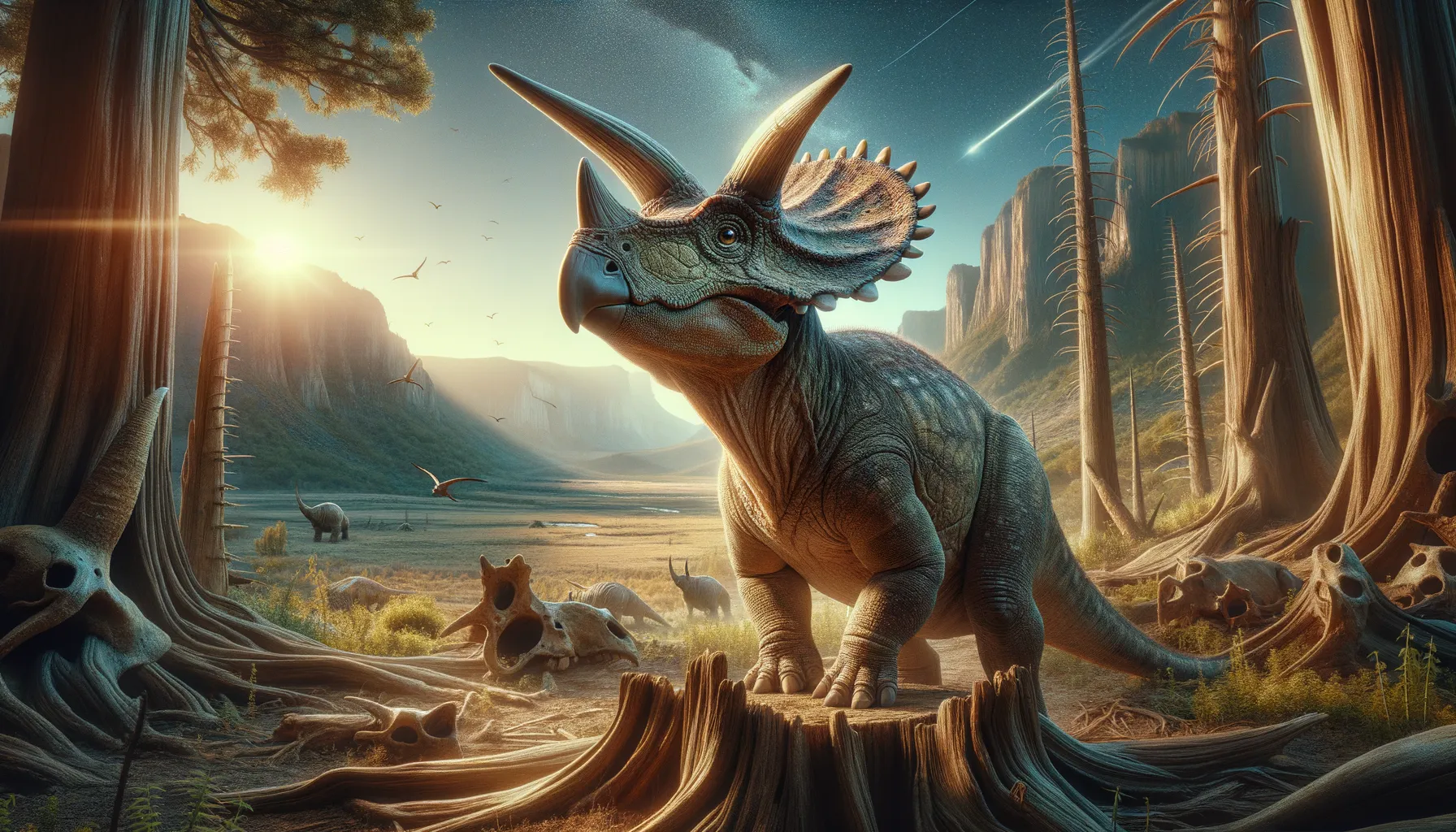
Ajkaceratops
Meet the small-horned survivor of Hungary!
Period
Cretaceous
Length
Roughly 1 meter (3.3 feet) long.
Height
About 0.5 meters (1.6 feet) tall.
Weight
Approximately 15 kg (33 lbs).
Ajkaceratops was a small, horned dinosaur from the Late Cretaceous period, discovered in what is now Hungary. Unlike its larger relatives, Ajkaceratops had less pronounced facial horns and frills. Its discovery shed light on the diversity of European ceratopsians, which were less well known compared to their North American counterparts. This dinosaur provides key insights into the evolutionary links across continents during its time.
Diet
Ajkaceratops was herbivorous, primarily feeding on the lush plant life of the Cretaceous period. Its diet likely included ferns, leaves, and possibly flowering plants that thrived in its environment.
Hunting
Being a herbivore, Ajkaceratops did not hunt but instead spent its time foraging for food. It would have relied on its relatively small size to navigate dense vegetation and forage efficiently in its habitat.
Environmental challenges
Ajkaceratops faced numerous environmental challenges, including changes in climate and vegetation during the Late Cretaceous. Its small size may have been advantageous for surviving in forested areas where larger dinosaurs could not easily reach. Competition for food resources with other herbivores may have also played a role in its survival strategies.
Speed
Slow, as it was a small, horned dinosaur.
Lifespan
Estimated to be around 10-15 years.
First discovery
Discovered in the Ajka coal mine in Hungary.
Fun Facts
- Ajkaceratops was a relatively small dinosaur that lived approximately 85 million years ago during the Late Cretaceous period.
- This dinosaur was a member of the family Ceratopsidae, known for their beaked faces and horned appearances, although Ajkaceratops itself did not have prominent horns.
- Ajkaceratops fossils were discovered in what is now Hungary, indicating that Europe had a more diverse dinosaur population than previously thought during the Cretaceous.
- Unlike its larger and more famous relatives like Triceratops, Ajkaceratops likely weighed only around 15 kilograms.
- Its name 'Ajkaceratops' is derived from Ajka, a town in Hungary near where its fossils were found, and 'ceratops', meaning horned face.
- The discovery of Ajkaceratops has provided valuable insights into the spread and evolution of ceratopsian dinosaurs on different continents.
- This dinosaur was probably a herbivore, feeding on the lush vegetation that existed in Europe during its time.
Growth and Development
Ajkaceratops likely experienced rapid growth during its early years to quickly reach a size that could better protect it from predators. Its development would have involved the growth of its characteristic facial structures, albeit less pronounced than those of larger ceratopsians. It may have also undergone seasonal growth patterns in response to environmental changes.
Habitat
This dinosaur lived in a region that was rich in plant life, surrounded by forests and river systems typical of Late Cretaceous Europe. Its habitat would have provided ample cover and food resources, essential for its survival. It likely moved in small groups or pairs to maximize foraging efficiency and reduce vulnerability to predators.
Interaction with other species
Ajkaceratops likely existed alongside a range of other dinosaur species, including predatory theropods. Its interactions with other species would have been mostly passive, focusing on avoiding predators and competing with other herbivores for food. Being smaller, it might have had to frequently find new patches of vegetation to reduce conflict over resources.
Natural lifespan
Ajkaceratops had a natural lifespan of around 10-15 years.
Reproduction
Ajkaceratops likely reproduced by laying eggs, as is common with most dinosaurs. It is believed that they may have exhibited some level of parental care, similar to modern birds, to ensure the survival of their young. Nesting sites might have been strategically selected to offer protection from predators and environmental hazards.
Social behaviour
Ajkaceratops might have lived in small groups, which could offer some protection against predators. Social behaviors could have included foraging together and possibly cooperative nesting to increase the chances of offspring survival. Communication among group members might have been essential, using visual displays or vocalizations.
Fossil locations
Fossils of Ajkaceratops have been found primarily in Hungary, specifically within the Ajka coal mine, providing significant insights into Late Cretaceous European ecosystems. These discoveries are crucial as they represent some of the few ceratopsian fossils found in Europe, offering a valuable glimpse into their evolutionary adaptation and distribution.
